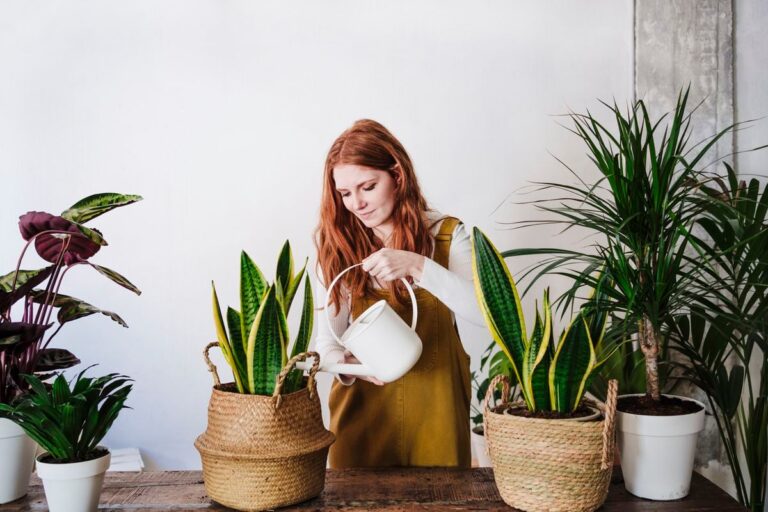According to approximate data, there are about 300,000 species of plants in the world.Number of people who consider themselves plant killers We can't count them yet, but a rough estimate that lacks scientific rigor suggests there are far more than we need. And the fact that he has 300,000 species means that under normal conditions and with a little care, there is not a single plant that could survive in the hands of a self-proclaimed “cactus killer.” It's almost unheard of.
“More plants die from overwatering than from dryness,” says Santiago González, director of the Spanish Association of Garden Centers (AECJ), and he is very adamant about it. This is a constant refrain among experts, and in most cases the fear of dying the plant leads to excessive care, which is exactly what kills the plant. We care too much. “Plants that lack water will recover, but with too much water that is not possible,” says Manuel Silvosa of Silvosa Hermanos.
González has some simple advice to avoid this. “Put your finger about an inch into the soil to see if it's dry. If it feels a little damp, wait a few days before watering.” , recommends transplanting, especially in March or April, or “removing the top layer of soil and adding new substrate.” Mix it up a little and it will give your plants a lot of nutrients. ” Finally, it is recommended to feed the plant every 1-2 months. There are countless liquid fertilizers on the market that can be mixed with water. Again, it is important to follow the instructions, as overdoing it will do more harm than good.
Now that you know the three basic elements of caring for your plants, which type should you choose? Gonzalez warns: “More and more people are selling very special and very rare plants online. These mini plants will die if you don't know about them or have a little knowledge about them. They're difficult to care for. ” Common sense prevails here. This species, which lives in the jungles of Brazil and is accustomed to 85 percent humidity, would not be comfortable in an indoor apartment in central Arizona.
So, we asked experts and have selected the best plants to get rid of the plant killer label.
This plant is considered one of the hardiest plants in existence. Its origins in Africa can be seen from the thickness of its leaves, which serve to store water. This tells us that the demand for water is not that great. In fact, it is one of the plants that tolerates drought best. “It hardly needs watering. Even in the summer, she can go on vacation for two or three weeks without watering, and when she comes back, the plants are doing well,” Silvosa says. And when it comes to light, it adapts well to the amount you have. Of course, it is better to avoid direct sunlight.
Also known as peace lily, it is a perennial with beautiful white flowers that is rarely needed. A great plant to improve your gardening skills. The better you take care of it, the more it flowers, and best of all, as Silvosa explains, “This plant communicates. When it needs water, its leaves droop.” be careful. Once it starts to wilt a little, you should water it normally without giving it any extra water. “After a few hours, it responds and returns to its natural state,” Silvosa says.
A classic among classics. This is another plant of tropical origin that has adapted to a more temperate climate and can be a surprise to first-timers. As with the plants mentioned above, it is recommended to water only when the substrate is dry, since yellow spots will begin to appear on the leaves if overwatered. It's a little more demanding in terms of light, but nothing serious. Indirect light is also fine. And the best thing about pothos, says Gonzalez, is that “when you take a cutting and put it in water, the roots will come straight from the stem.” With pothos, you can also give cuttings to friends by dying the plant. There's a reason these were our grandmothers' favorite plants.
“It requires very little water and can last for weeks without watering. It can survive winters from October to March and will not die without adding a drop of water,” Silvosa says. . This is Sansevieria, or mother-in-law's tongue, a plant that can be forgotten. In fact, that's about the best you can do for it. It prefers indirect light, but less light will only slow growth and reduce the number of leaves. Furthermore, according to a study conducted by NASA in 1989, Sansevieria is a purifying plant, similar to potus and spathiphyllum. In 2015, the BBC confirmed with one of the study authors that its conclusions still hold.
Anthuriums are one of the hardiest flowering plants. When exposed to indirect light, the colors become more vivid and you can enjoy the flowers for a long time. It should be noted that what many believe to be striking red, yellow, or white flowers are actually leaves that protect the real flowers. As with all plants on this list, do not water until the substrate is dry. If the ambient humidity is low, spraying with water may be better than pouring water.
Its unique appearance and perennial nature make the spineless yucca a highly ornamental choice that requires little care. “It's very hardy because the entire trunk is a reservoir, so it performs very well with very little watering,” explains Gonzalez. When it comes to light, here are plants that prefer direct sunlight. Without enough light, growth will be slow and the leaves may lose their vibrant color, but with enough light and transplanting if necessary, they will grow quite well and look great.
Please sign up weekly newsletter Get more news coverage in English from EL PAÍS USA Edition


